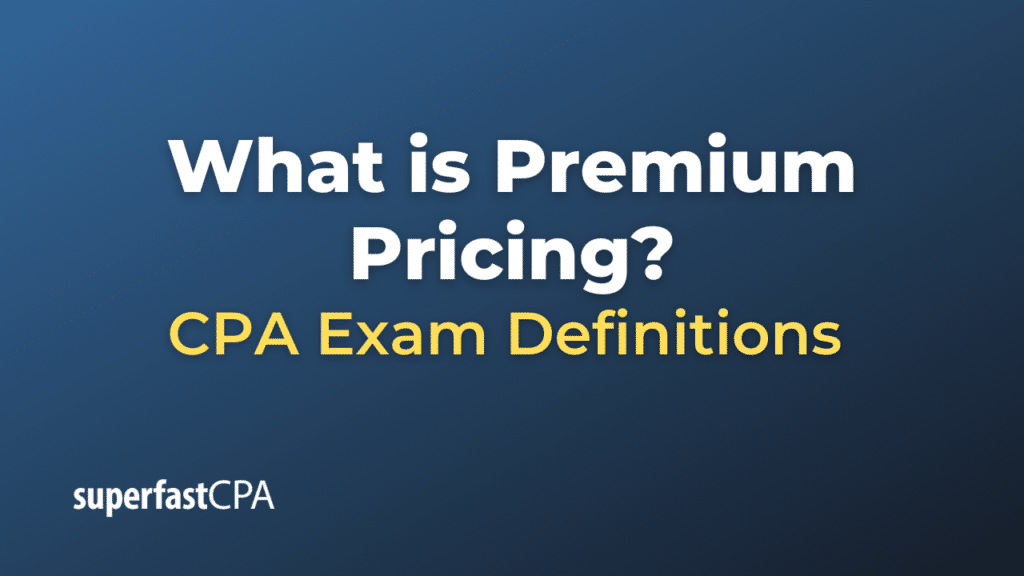Premium Pricing
Premium pricing, also known as prestige pricing, is a strategy where businesses set the prices of their products or services higher than their competitors. It’s often used for high-quality, luxury, or unique products and services that have a distinctive brand image, superior features, or exclusive availability.
The goal of premium pricing is to create the perception of superior value and quality, enhancing the product’s or service’s appeal to consumers who are willing to pay more for the best or most exclusive items. This strategy relies on the idea that a higher price can indicate higher quality, creating a sense of prestige or luxury around the product or service.
Here are a few key points about premium pricing:
- Brand Image: The product or service must be perceived as high-quality, luxurious, or exclusive to justify the higher price. Effective branding and marketing are essential in creating this perception.
- Target Market: Premium pricing works best when targeting consumers who value quality, luxury, or exclusivity over cost and are willing and able to pay more for these characteristics.
- Profit Margins: Because the prices are higher, premium pricing can result in larger profit margins per unit sold. However, it may also lead to lower sales volumes if only a specific segment of the market can afford or is interested in the product or service.
- Competition: Premium pricing may not be effective in markets with high competition unless the product or service has unique features or a strong brand that sets it apart.
Examples of companies that use premium pricing include Apple for its electronic devices, Tesla for its electric vehicles, and luxury brands like Gucci or Louis Vuitton for their fashion products.
Example of Premium Pricing
Let’s take the example of Apple Inc., the technology company renowned for its iPhones, iPads, and Mac computers.
Apple utilizes a premium pricing strategy for many of its products. For instance, when Apple launches a new iPhone model, it is typically priced higher than similar smartphones from other manufacturers. Despite this, many customers are willing to pay this premium price because they perceive the iPhone as a high-quality, innovative, and status-symbol product.
For example, let’s consider Apple’s iPhone 12 Pro. The starting price for this model is $999, which is significantly higher than the prices of many other smartphones on the market, such as Samsung’s Galaxy S20 FE, which starts at $699.
However, despite the price difference, Apple maintains strong sales because customers perceive the iPhone as offering superior quality, design, and user experience, justifying the premium price.
Here’s how premium pricing works in this case:
- Brand Image: Apple has established a strong brand image associated with innovation, quality, and design. This allows them to price their products at a premium.
- Target Market: Apple’s target market is willing to pay higher prices for their products because they value the design, user interface, ecosystem, and status symbol associated with Apple products.
- Profit Margins : The premium pricing strategy allows Apple to maintain high profit margins on their products, even though they might sell fewer units compared to lower-priced competitors.
- Competition: Despite intense competition in the smartphone market, Apple’s unique design, brand loyalty, and product ecosystem help it stand out, allowing it to successfully employ a premium pricing strategy.
This example demonstrates how a premium pricing strategy can be effectively used by companies with strong brands and high-quality products.













